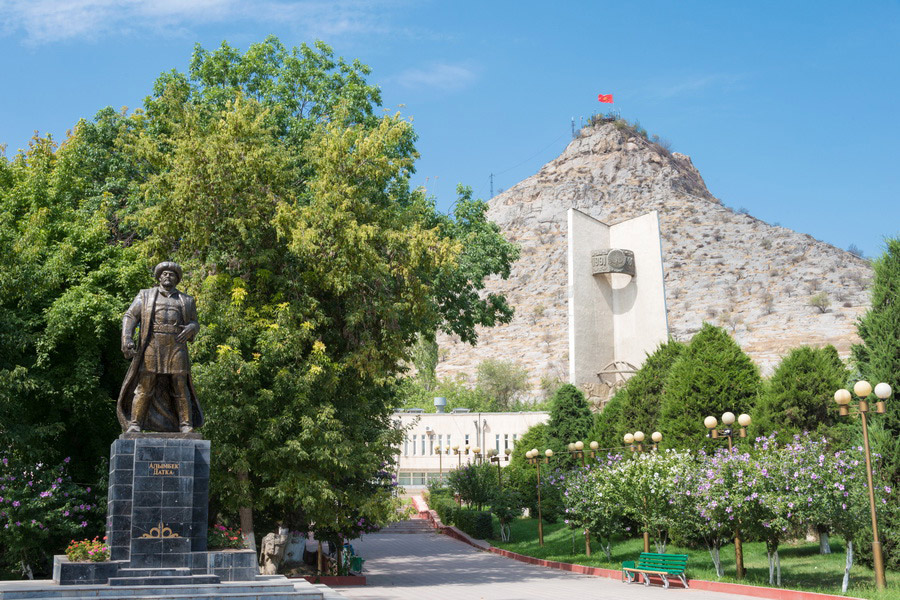Osh and Mount Sulaiman, Kyrgyzstan

Osh is another ancient city of Central Asia, the main city of modern Kyrgyzstan’s south. According to the most modest estimates it is about 2,500 years old. For many millennia because of geographically convenient position at the foothills of the Pamir it was a transit city of the Silk Road on the way from Fergana oasis to Kashgar. Local residents made their living serving travelers, caravaneers and merchants. Osh, being a convenient place for trade and goods exchange attracted merchants, handicraftsmen, cattlemen and farmers.
The glorious past of the city is kept in the Silk Way Museum with the exhibition entirely dedicated to one of the most important trade arteries in the history of mankind.
Located on the green hillsides Osh occupies both sides of the Ak-Bur River. In the center of Osh there stands the four-top Sulaiman-Too mountain ridge. It is a unique historical and architectural monument. The holy mountain worked as natural protection against enemies and was for a long time was the place of pilgrimages and the tourist destination.
Local residents have saved a beautiful legend about the mountain: Tsar Solomon travelled about the country with his army and having reached the high mountain ordered the soldiers to stop with the “Khosh” (enough) sign. The mountain which stopped the army was named after the great governor Sulaiman-Too (Sulaiman is the local version of Solomon). The city was called Osh. However, many people link the name with the word “guishan” (the name of the capital of the 1st – century BC Dayuan state which had occupied the territory of modern Osh.
Already in the 10th century this unremarkable at first sight rocky height attracted pilgrims from entire Asia for it had been considered from time immemorial that it was there that the Prophet Sulaiman addressed the God and where the traces of his forehead and knees remained. Babur (1483-1530) (full title: Al-Sultan al-'Azam wal Khaqan al-Mukarram Zahir ud-din Muhammad Jalal ud-din Babur Padshah Ghazi), the great grandson of Timur and the founder of the Great Moguls dynasty built a small khudzhra (a cell) with a mikhrab above that holy place for each Moslem. Now the site is occupied by the white mosque and Babur’s house recreated in accordance with the archival sources.
The most part of the mountain belongs to the National memorial museum “The Silk Road” and includes Asaf in-Burkhia mausoleum, the bath ruins (11th – 12th centuries, now there is the open-air museum), Takhti Suleiman mosque and Dzhami Ravat Abdullahan mosque (both dated 10th -11th centuries).
Other landmarks of the city are the mausoleums of local governors (9th century), the ruins of ancient Ak-Bura fortress and relatively young building of Mohammed Yusuf Baikhodzhi-Ogly mausoleum.

